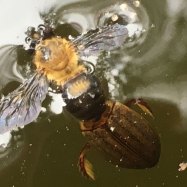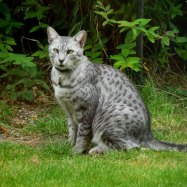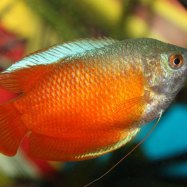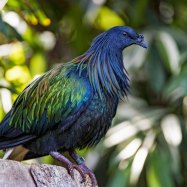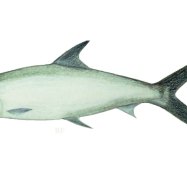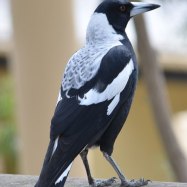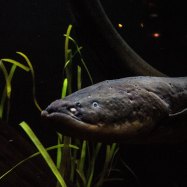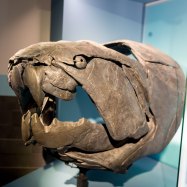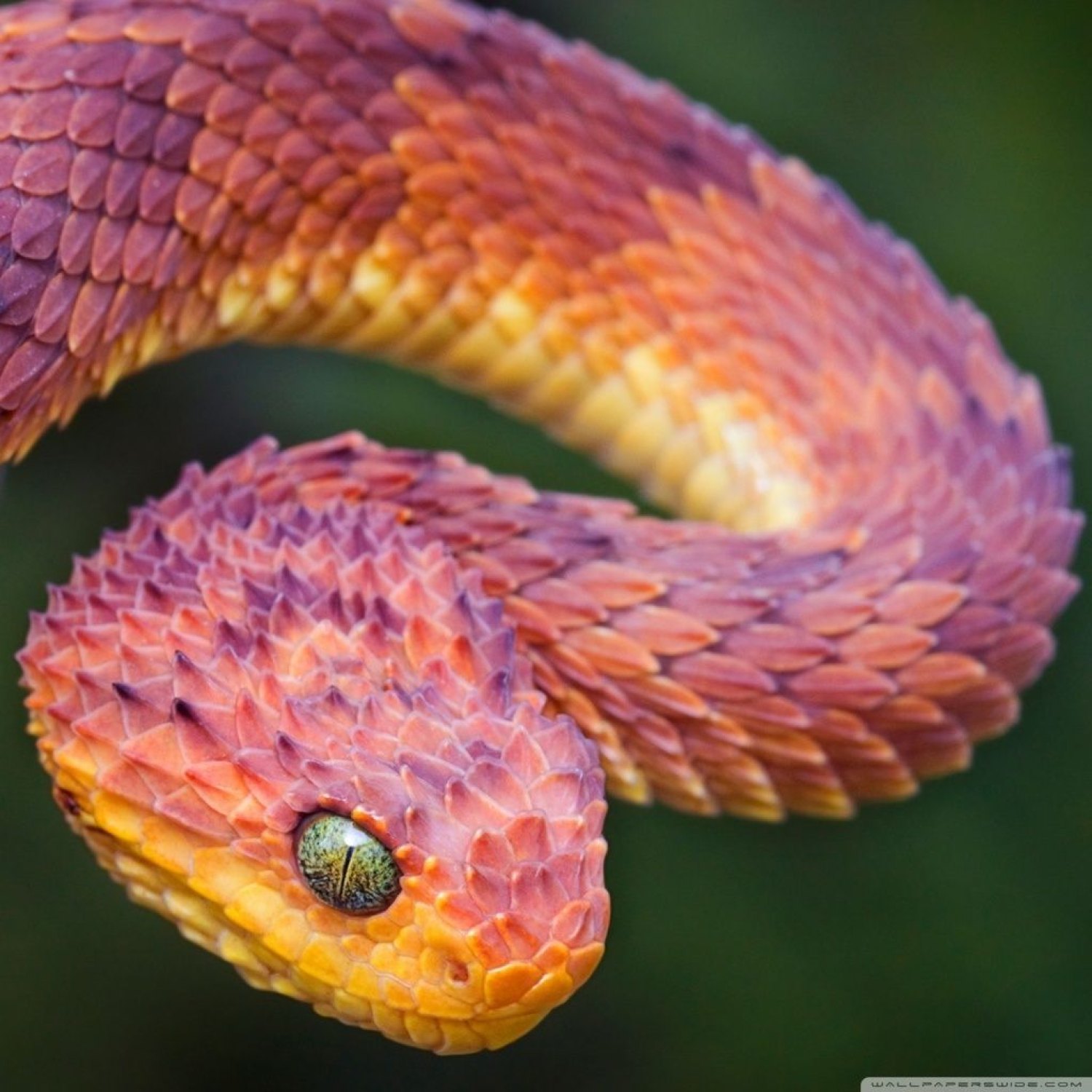
Bush Viper
Average length of 20-35 inches (50-90 cm)
The Bush Viper, found in Sub-Saharan Africa, is a small to medium-sized snake with an average length of 20-35 inches. They belong to the Viperidae family and have a stout body and a short, triangular head. These eye-catching snakes are known for their beautiful patterns and colors. However, they are also venomous, so it's best to admire them from a safe distance. #BushViper #SubSaharanAfrica #Viperidae
Animal Details Summary:
Common Name: Bush Viper
Kingdom: Animalia
Habitat: Rainforests, woodlands, and montane habitats
The Magnificent Bush Viper: A Deadly Beauty of the African Rainforests
The African continent is home to some of the most diverse and fascinating species of animals. One such creature that stands out with its unique beauty and lethal capabilities is the Bush Viper. Scientifically known as Atheris squamigera, this small to medium-sized snake is a member of the Viperidae family. Its common name, Bush Viper, originates from its primary habitat, the dense rainforests of Central and West Africa Bush Viper. It is also sometimes referred to as the Atheris jonesii or Western Bush Viper.At first glance, the Bush Viper's appearance may seem quite ordinary, but a closer look reveals its stunning colors and patterns, making it one of the most visually striking snakes in the world. Its body can be green, brown, yellow, or black, with intricate patterns of chevrons, diamonds, or speckles. This incredible diversity in coloration is due to the species' remarkable ability to adapt to its surroundings, making it well-camouflaged and allowing for successful hunting and protection from predators.
The Bush Viper's distribution range includes the Democratic Republic of Congo, Uganda, and Rwanda, with its primary location being in Sub-Saharan Africa. It is mainly found in rainforests, woodlands, and montane habitats with a humid climate, as these environments provide the ideal conditions for these snakes to thrive.
To understand this snake's uniqueness, we must delve deeper into its classification and characteristics. The Bush Viper belongs to the Animalia kingdom, Chordata phylum, Reptilia class, and Squamata order, which includes lizards, snakes, and amphisbaenians. This classification places the Bush Viper in the same category as other venomous snakes, such as cobras and rattlesnakes Braque Francais.
The Viperidae family, also known as vipers, is recognized for their venomous capabilities, making them feared and respected by humans and other animals. The Bush Viper is no exception, with its venom being potent enough to inflict a lethal bite on its prey or predator.
Diet and Feeding Method
The Bush Viper is a carnivorous species, known for hunting and consuming small mammals and birds. Its method of hunting is both fascinating and gruesome, where it lies in wait for its prey and strikes with lightning speed. Unlike other snakes that use constriction to kill their prey, the Bush Viper's venom is its primary hunting tool.The viper's fangs are long and hollow, allowing it to inject its venom deep into its prey. Once the venom enters the victim's bloodstream, it acts as a neurotoxin, causing paralysis and suffocation. The Bush Viper's strong digestive system allows it to consume its prey whole, leaving behind nothing but fur, feathers, and bones.
Interestingly, the Bush Viper has been observed feeding on other venomous snakes, such as cobras, which is a risky and impressive feat. It is a clear indication of the Bush Viper's strength and resilience in the wild.
Habitat and Range
The primary habitat of the Bush Viper is the dense rainforests of Central and West Africa, where it can find ample shelter and food sources. However, it can also thrive in woodlands and montane habitats, as long as the environment is warm and humid.The Bush Viper's geographical distribution range is relatively small, covering countries such as the Democratic Republic of Congo, Uganda, and Rwanda. This limited range is mainly due to the high competition for resources with other snake species.
The Bush Viper's survival and adaptation in its habitat are primarily due to its incredible camouflage abilities. Its body coloration and patterns make it almost indistinguishable from the foliage and branches of trees, allowing it to blend in seamlessly and avoid detection by predators and prey alike.
Physical Appearance and Body Features
The Bush Viper has a unique body shape, with a stout body that tapers towards the tail and a short, triangular head. It is a relatively small to medium-sized snake, with an average length of 20-35 inches (50-90 cm). However, some specimens have been recorded to reach lengths of up to 3 feet (90 cm).One of the most notable features of the Bush Viper is its striking colors and patterns. Its body color can be green, brown, yellow, or black, and it is often accompanied by intricate patterns of chevrons, diamonds, or speckles. These patterns are unique to each individual and are typically used to differentiate between subspecies and geographical variations.
Another defining characteristic of the Bush Viper is its large, protruding nostrils, which give it a menacing and intimidating appearance. These nostrils have a sensory function and are used to detect prey or predators through their sense of smell.
Speed and Movement
Despite its small size and stout body, the Bush Viper is a surprisingly fast and agile snake. It can move swiftly through the trees and on the forest floor, reaching speeds of up to 2 miles per hour. This may not seem impressive compared to other species of snakes, but for a viper, it is a considerable feat.The viper's method of movement is primarily terrestrial, meaning it spends most of its time on the forest floor. However, it is also known to be an excellent climber, utilizing its strong body and prehensile tail to maneuver through branches and vegetation.
Dangerous Beauty: The Bush Viper's Venom
As mentioned earlier, the Bush Viper is a venomous snake, and its venom is considered to be one of the most potent in the world. It consists of a combination of neurotoxins and hemotoxins, making it a lethal weapon against its prey and predators.The neurotoxins in the Bush Viper's venom attack the nervous system, causing paralysis and ultimately leading to respiratory failure. The hemotoxins, on the other hand, target the victim's blood cells, leading to tissue destruction and internal bleeding. Both these components work together to cause a swift and painful death for the bite victim.
Fortunately, the Bush Viper's venom is not considered deadly to humans, and bites are relatively rare. However, if bitten, immediate medical attention must be sought to prevent severe symptoms and complications.
Conservation Status
The Bush Viper is not currently listed as an endangered species; however, it is facing threats that could lead to a decline in its population. The primary threat to this species is habitat destruction, as the dense rainforests it calls home are being cleared for human development.Another threat comes from the illegal pet trade, where these beautiful snakes are captured and sold to collectors. This practice not only disrupts the natural ecosystem but also puts pressure on the Bush Viper population.
Therefore, it is essential to educate the public about the significance of these snakes in their natural habitat and the importance of preserving their environment.
In Conclusion
The Bush Viper is undoubtedly one of nature's most spectacular creations, with its stunning colors and patterns and its lethal capabilities. Its unique behavior, habitat, and venom make it an essential species in the African ecosystem, and its beauty and rarity have captured the interest of many individuals around the world.While it may seem like a dangerous and fearsome creature, the Bush Viper plays a crucial role in maintaining a healthy balance in its habitat. It is a reminder of the incredible diversity and beauty of the animal kingdom and the importance of protecting and preserving these natural wonders for future generations to come.

Bush Viper
Animal Details Bush Viper - Scientific Name: Atheris squamigera
- Category: Animals B
- Scientific Name: Atheris squamigera
- Common Name: Bush Viper
- Kingdom: Animalia
- Phylum: Chordata
- Class: Reptilia
- Order: Squamata
- Family: Viperidae
- Habitat: Rainforests, woodlands, and montane habitats
- Feeding Method: Carnivorous
- Geographical Distribution: Central and West Africa
- Country of Origin: Democratic Republic of Congo, Uganda, and Rwanda
- Location: Sub-Saharan Africa
- Animal Coloration: Variable; can be green, brown, yellow, or black
- Body Shape: Small to medium-sized snake with a stout body and a short, triangular head
- Length: Average length of 20-35 inches (50-90 cm)
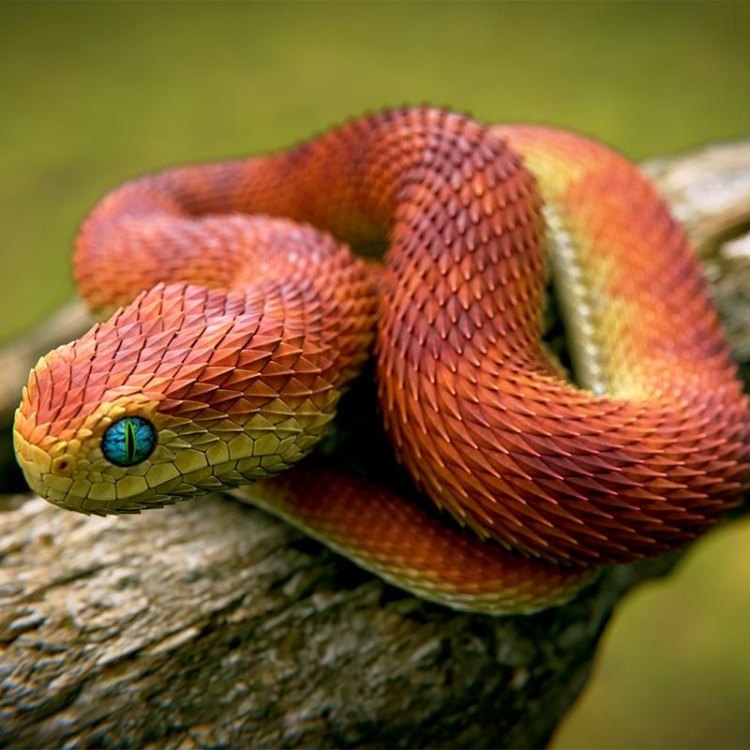
Bush Viper
- Adult Size: Can grow up to 3-4 feet (90-120 cm)
- Average Lifespan: 10-20 years
- Reproduction: Viviparous (gives live birth)
- Reproductive Behavior: Mating occurs during the rainy season
- Sound or Call: Does not have a well-documented sound or call
- Migration Pattern: No documented migration pattern
- Social Groups: Solitary
- Behavior: Nocturnal and arboreal; primarily active at night and spends most of its time in trees
- Threats: Habitat loss, illegal wildlife trade
- Conservation Status: Not evaluated (IUCN Red List)
- Impact on Ecosystem: Helps control populations of small mammals and reptiles
- Human Use: Collection for the pet trade
- Distinctive Features: Large, triangular-shaped head; keeled scales; hinged fangs
- Interesting Facts: 1. The bush viper has the ability to change its coloration to blend in with its surroundings. 2. It relies heavily on camouflage and remains motionless to avoid detection. 3. The venom of the bush viper is hemotoxic and can cause severe tissue damage. 4. Females are larger than males in this species.
- Predator: Birds of prey, large mammals
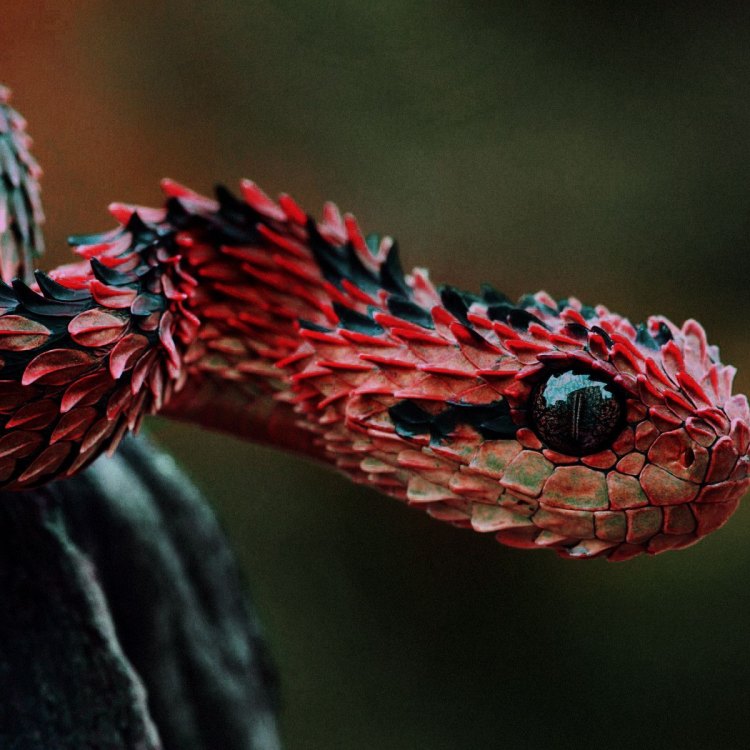
Atheris squamigera
Hidden Beauty: Exploring the Unique World of the Bush Viper
Deep within the lush forests of Africa, there lies a creature that represents both beauty and danger – the bush viper. With its striking appearance and elusive behavior, this snake has captured the curiosity of many, yet remains largely unknown to the general public.So, let us take a journey into the world of the bush viper, and discover what makes this species so unique and fascinating.
Appearance and Size
The bush viper (Atheris squamigera) is a venomous snake that can be found in parts of central and western Africa PeaceOfAnimals.Com. It is one of over 40 species in the Atheris genus, all of which are commonly known as "bush vipers".
This particular species has a distinctive triangular-shaped head, adorned with two large, hinged fangs that it uses to inject venom into its prey. Its eyes are small and protrude slightly, giving it a calculating gaze. But perhaps its most distinguishing feature is the keeled scales that cover its body, giving it a rough, textured appearance.
As an adult, the bush viper can grow up to 3-4 feet (90-120 cm) in length, making it a moderately sized snake compared to others in its family. However, its size does not diminish its impact, as we will soon discover.
Reproduction and Behavior
One of the most intriguing aspects of the bush viper's behavior is its reproductive process. Unlike most snakes that lay eggs, this species is viviparous, meaning it gives birth to live young.
Mating in the bush viper occurs during the rainy season, and females can give birth to as many as 20-30 babies at a time Bed Bugs. These tiny, helpless creatures are immediately left to fend for themselves, as their mother does not provide any parental care.
When it comes to behavior, the bush viper is known to be solitary, preferring to live and hunt alone. It is a nocturnal and arboreal species, which means it is primarily active at night and spends most of its time in trees. This behavior not only helps the snake avoid predators but also allows it to ambush its prey from above.
Is there a way to detect the presence of a bush viper? Sadly, the answer is no. This species does not have a well-documented sound or call, making it even more elusive and challenging to study.
Threats and Conservation Status
While the bush viper remains relatively unknown, it is facing a significant threat to its survival – habitat loss. As human activities continue to encroach upon its natural habitat, this species is losing crucial resources for survival. Forest destruction for agriculture, logging, and urban development are some of the primary causes of habitat loss.
Moreover, illegal wildlife trade also poses a significant threat to the bush viper. These snakes are highly sought after for their striking appearance and are often collected for the exotic pet trade. The unregulated collection and trade of this species further contribute to its decline in the wild.
Despite these threats, the bush viper's conservation status has not been evaluated by the International Union for Conservation of Nature (IUCN). It is estimated that the population of this species is gradually decreasing, mainly due to habitat loss and overcollection. Urgent measures need to be taken to protect this beautiful snake and its habitat.
The Impact on Ecosystem
So, what role does the bush viper play in its ecosystem? As a predator, it helps to control the populations of small mammals and reptiles, playing a vital role in maintaining the balance of its habitat. By keeping these populations in check, it helps to preserve the delicate balance of the ecosystem.
In addition, the bush viper's presence also benefits the plants in its habitat. As it preys on small mammals, it also prevents them from causing damage to vegetation. Furthermore, the snake's skin and feces provide essential nutrients for the growth of plants, contributing to the overall health of the ecosystem.
Human Use and Distinctive Features
The bush viper's striking appearance and unique behaviors have not gone unnoticed by humans, and sadly, this has led to its exploitation. As mentioned earlier, this species is often collected for the pet trade, making it a popular choice for exotic pet owners. However, this practice only further endangers its survival in the wild.
But besides its danger to humans, the bush viper also presents significant risks to its predators. The combination of its size, venom, and camouflage makes it a formidable predator, and only a few creatures can successfully prey on it. Some of its predators include birds of prey and large mammals such as primates and wildcats.
But perhaps the most intriguing aspect of this snake's features is its ability to change its coloration to blend in with its surroundings. Instead of relying solely on its camouflage, the bush viper can actively change its skin color to match its environment. This adaptation allows it to remain undetected by both predators and prey, making it an even more successful predator.
Interesting Facts
As we conclude our journey into the world of the bush viper, here are some interesting and lesser-known facts about this unique species:
- The bush viper is known to be a relatively calm and non-aggressive snake, only striking when it feels threatened.
- Its venom is hemotoxic, meaning it attacks the blood vessels and can cause severe tissue damage. However, its venom is less potent compared to other venomous snakes, and there is currently no antivenom available for its bite.
- Females are larger than males in this species, which is uncommon in most snake species.
- The bush viper's tongue is forked, allowing it to smell in stereo, giving it a more precise sense of smell.
Conclusion
The bush viper is undoubtedly a hidden gem in the world of snakes. Its unique features, behaviors, and adaptations make it not only a fascinating species but also a crucial contributor to the ecosystem it inhabits. However, its existence is under threat, and urgent action needs to be taken to protect it from extinction. As we continue to explore and learn about the diverse animal species around us, let us not forget to appreciate and protect these creatures that add beauty and diversity to our world.
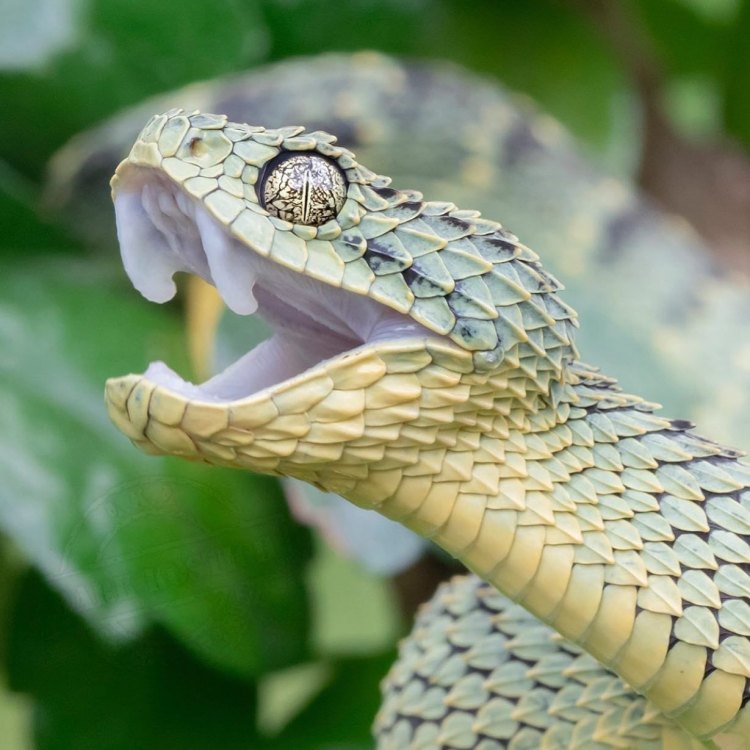
The Magnificent Bush Viper: A Deadly Beauty of the African Rainforests
Disclaimer: The content provided is for informational purposes only. We cannot guarantee the accuracy of the information on this page 100%. All information provided here may change without prior notice.

